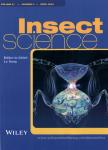An unsettling explanation for the failure of skatole-baited ovitraps to capture Culex mosquitoes
作者机构:Depariamento de EntomologiaInstituto Aggeu MagalhaesFundagao Oswaldo CruzAv. Professor Moraes RegoRecifePEBrazil CentroAcademicodoAgreste Universidade Federalde PernambucoCaruaruPEBrazil Departamentode Biologia CelularEmbriologia e GeneticaCentro de Ciencias Biologicas Universidade Federal de Santa CatarinaFlorianopolisSC.Brazil Faculdade de Saude PCiblicaDepartamento de Epidemiologia Universidade de Sao PauloSao PauloSPBrazil Department of Molecular and Cellular BiologyUniversity of California-DavisDavisCaliforniaUSA
出 版 物:《Insect Science》 (昆虫科学(英文版))
年 卷 期:2019年第26卷第5期
页 面:873-880页
核心收录:
学科分类:0710[理学-生物学] 0830[工学-环境科学与工程(可授工学、理学、农学学位)] 07[理学] 09[农学] 0904[农学-植物保护] 0901[农学-作物学] 0713[理学-生态学]
基 金:supported by Conselho Nacional de Desenvolvimento Cientifico e Tecnologico (CNPq) Fundacao de Amparo a Ciencia e Tecnologia do Estado de Pernambuco the National Institute of Allergy and Infectious Diseases of the National Institutes of Health, under award
主 题:Culex quinquefasciatus Culex nigripalpus dengue oviposition attractant skatole West Nile virus Zika
摘 要:Culex mosquitoes are primarily found in temperate and tropical regions worldwide where they play a crucial role as main vectors of filarial worms and arboviruses. In Recife, a northeast city in Brazil, high densities of Culex quinquefasciatus are often found in association with human populated areas. In marked contrast to another part of the city, field tests conducted in the neighborhood of Sitio dos Pintos showed that trapping of mosquitoes in skatole-baited ovitraps did not differ significantly from captures in control (water) traps. Thus, classical and molecular taxonomic approaches were used to analyze the Culex species circulating in Sitio dos Pintos. Results obtained from both approaches agreed on the cocirculation of Culex quinquefasciatus and Culex nigripalpus in three different areas of this neighborhood. What was initially considered as an unexpected failure of this lure turned out to be a more unsettling problem, that is, the first report in Recife of Culex nigripalpus, a vector of Venezuelan equine encephalitis virus and West Nile virus. Unplanned urbanization processes close to remnants of the Atlantic forest, such as observed in Sitio dos Pintos, may have contributed to the introduction of Cx. nigripalpus in urban areas.



